Swinging around branch to branch and devouring fruits, insects, etc. but where do the squirrel monkeys live? Have you ever thought about it?
Well, they live in dense forest areas of tropical rainforests of South America. And while choosing those areas, they consider some key factors like food, water, security, etc., which I will discuss down below.
I have broken each segment into a few divisions so that you can have a clear idea of where and how this squirrel monkey lives.
Let’s see them in detail –
What Is the Natural Habitat of Squirrel Monkeys?
Introducing our highly social animal, squirrel monkeys, who are native dwellers of the South and Central American tropical forests. They jump around from branch to branch in the trees.
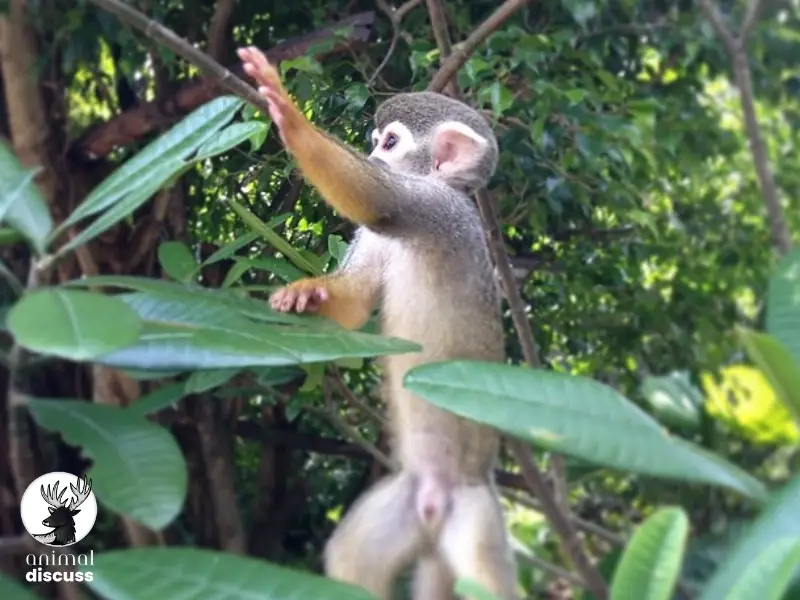
You can see them residing primarily in the canopy layer, where they can be found amidst the dense foliage of lofty trees.
Some of the many types of forests that are called home by squirrel monkeys include:
- Primary forests – Old, undisturbed forests are known as primary forests. Squirrel monkeys adorn these places because of the intricate architecture and wide variety of flora and fauna.
- Secondary forests – Forested areas that have recovered from previous deforestation are known as second-growth forests.
Primary forests are home to a wide variety of plants and animals, but secondary forests are still suitable for squirrel monkeys.
- Gallery forests – The narrow strips of woodland along the banks of rivers and streams are called gallery forests.
They facilitate movement. And this is crucial for animals and can play a significant role in linking geographically dispersed squirrel monkey communities.
- Edges of forest – Squirrel monkeys inhabit the transition zones between dense forests and more open habitats, such as fields or savannas.
These areas are home to a variety of ecosystems that these animals can take advantage of.
Squirrel monkeys usually inhabit the top tier of trees, although they will occasionally descend to the ground in search of resources. Some even reside on islands, and you will love to watch these cute animals swimming.
How Can Squirrel Monkeys Adapt to Their Natural Habitat?
How have these teeny-tiny creatures adapted to the harsh weather? What are their abilities to adjust to their habitat? Let’s look at the section below to know in detail.
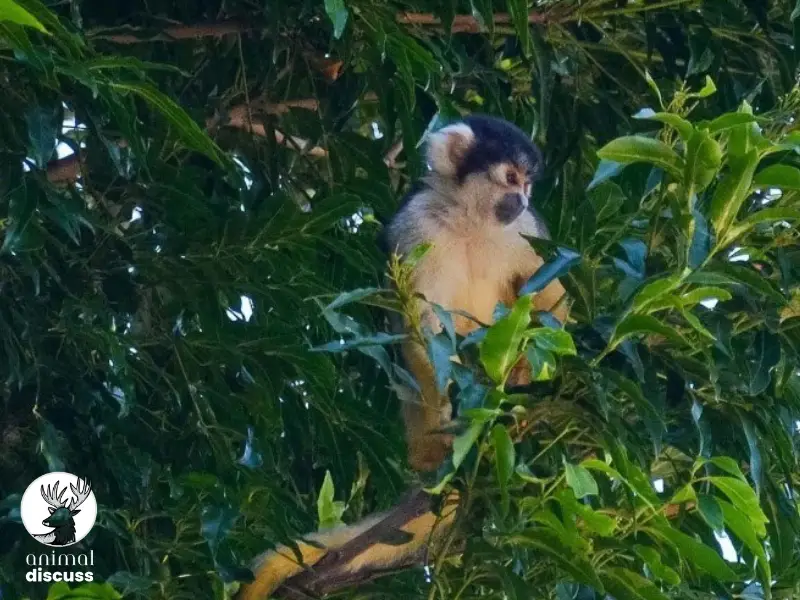
Locomotion and mobility
Beginning with the locomotion of the acrobatic climbers. Due to having large legs, sharp claws and outstanding balance, they can climb trees easily. Thus, they can cover distances or even sprint on thin branches with ease.
And you know, they lack the prehensile tails despite being monkeys of the New World. But these long tails help these primates maintain their balance, guide them when they leap, and provide a sense of security when they sleep or rest.
Harvesting Their Own Food
Squirrel monkeys are omnivores! For which they are able to adjust fluctuations of seasons. Due to being able to consume diverse foods like fruits, insects, etc., they adapt well.
Other than having keen senses their teeth are sharp too! The incisor teeth let the nuts and seeds break within and consume the nutrients from it.
Proper Social Behavior
Our friendly monkeys are so social as they live in troops! The troop life of squirrel monkeys is complex and extensive, consisting of 30–80 monkeys.
But how does this group stay together? Through communicating! As they navigate the ever-changing forest, they use their wide array of vocalizations.
It includes chirps, barks, and whistles—to communicate about potential threats, food sources, and social interactions.
However, do you know that squirrel monkeys share their food? Yes, they do within the troop. It improves resource use and fosters stronger social relationships, both of which are vital for survival.
What Are Their Abilities to Adapt to New Areas?
Just like I mentioned in the upper section, squirrel monkeys are masters of problem solvers. As they are both intelligent and resourceful.
For instance, if they need to open fruits, they do it with sticks or use the sticks to extract bugs from crevices.
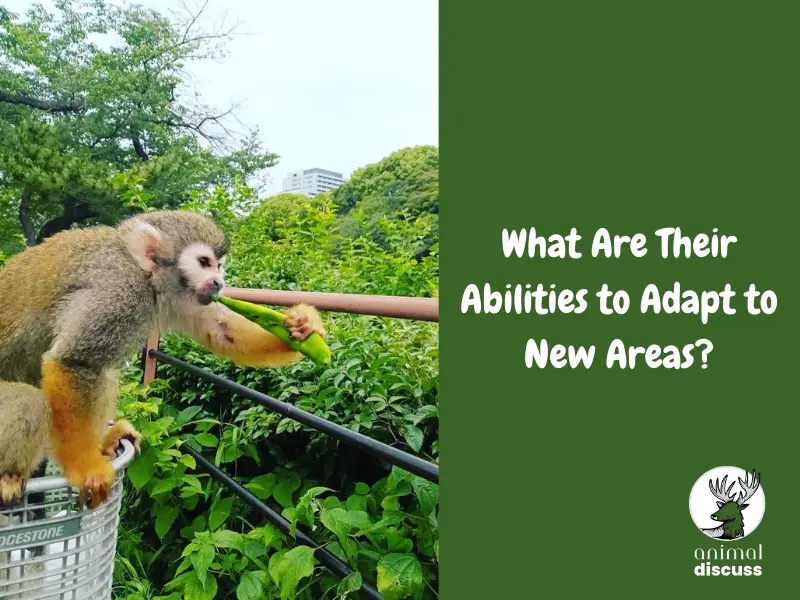
Other than just being friendly, they are quite able to tolerate disturbance. By relocating to secondary forests or the periphery of forests, they can adapt to a lesser degree of habitat degradation and fragmentation than other primate species.
One key aspect that comes when we talk about adaptability is their physiological changes. For instance – they do thermoregulation. That means they are able to remain cool in the hot and humid jungle with their short fur and efficient sweating mechanisms.
Moreover, the beneficial bacteria in their digestive tract aid in the digestion of even the most indigestible plant materials.
However, the specific adjustments could vary depending on the species and the area. We see how squirrel monkeys’ remarkable abilities allow them to thrive in the dynamic jungle canopy.
How Do Squirrel Monkeys Choose Their Habitat?
The squirrel monkey doesn’t really “choose” its home, but it does choose areas that provide for its unique nutritional, shelter, and mating requirements. Let’s see in detail –

Access to food
First and foremost, they look for areas that have fruit abundance and diversity in it. Also, bugs and tiny animals with backbones are their second choice of food.
And the place where they can consume insects and small animal’s supplements and provides them with the protein they require.
Safe and suitable accommodation
After taking care of the availability of food, here comes the factor of whether the area they have chosen has secure accommodations or not.
For this, the first choice for them is locating a dense canopy cover. This thick forest canopy not only blocks the sun’s rays but also shields you from snakes and raptors.
Besides, they look for a stable space where they can nest safely and comfortably. It will require just only branches with suitable bends or holes.
Most importantly, they look for space where already squirrel monkey troops exist. This is because these monkeys are highly social.
Water supply
Another last aspect that they keep in mind while choosing a habitat is the water supply. However, the majority of the water supply comes from the foods they consume. But they also drink water from holes in trees or the puddles on the ground.
An interesting fact is they drink nectar when there is a scarcity of food.
Other than the above-mentioned key factors, they even look for areas where they can prevent potential dangers. For this, they choose areas with a lower concentration of predators. Their predators are birds, cats and snakes.
Nevertheless, if any mishaps occur and they detect a predator, they locate areas where they can easily shift.
What Challenges and Threats Squirrel Monkeys Do Face in Habitat?
As they are wild animals, both from the forest and humans they face several threats on a regular basis. The following are among the most crucial:
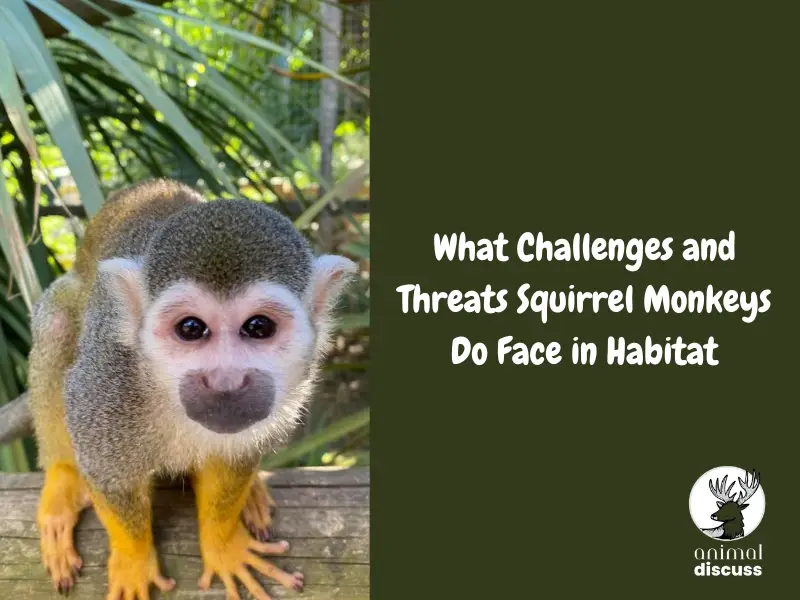
Disintegration and loss of natural habitats
Just like other forest animals, squirrel monkeys are the sufferers of deforestation. Activities such as cultivating crops, constructing roads and bridges, and harvesting trees for wood, all contribute to this.
It divides their communities, which leaves individuals more vulnerable to harm, and takes away their vital resources. Most importantly, doing so does habitat fragmentation. Also, this hinders their genetic diversity and long-term survival by cutting off migratory pathways and dividing populations.
The intrusion of humans
We humans, when trespass on their homes and natural surroundings, it becomes a challenge for them to survive there.
Likewise, when we build roads, dams or any infrastructure as such it damages their territory. Moreover, it disrupts the pattern of migration and creates difficulty for squirrel monkeys to move around.
Hunting and capture without a permit
Despite the fact that these primates are protected in many regions. The bushmeat trade involves the killing of squirrel monkeys for their meat.
Because of this, illegally capturing individuals for the pet trade poses a hazard even today, particularly to marginalized communities.
Illness
Another challenge they face is getting infected. As it is a major concern that newly arrived diseases can swiftly spread via geographically separated populations.
Plus, diseases can be more easily transmitted from one species to another when they are in close proximity to humans and other animals.
These issues create a complex network of threats that impact squirrel monkey populations across their area.
What Are A Few Conservation Efforts to Address These Issues?
The status of the conservation of squirrel monkeys in terms of IUCN is not threatened. But one species named the black squirrel monkey is vulnerable. So, in order to conserve them what can be done is –
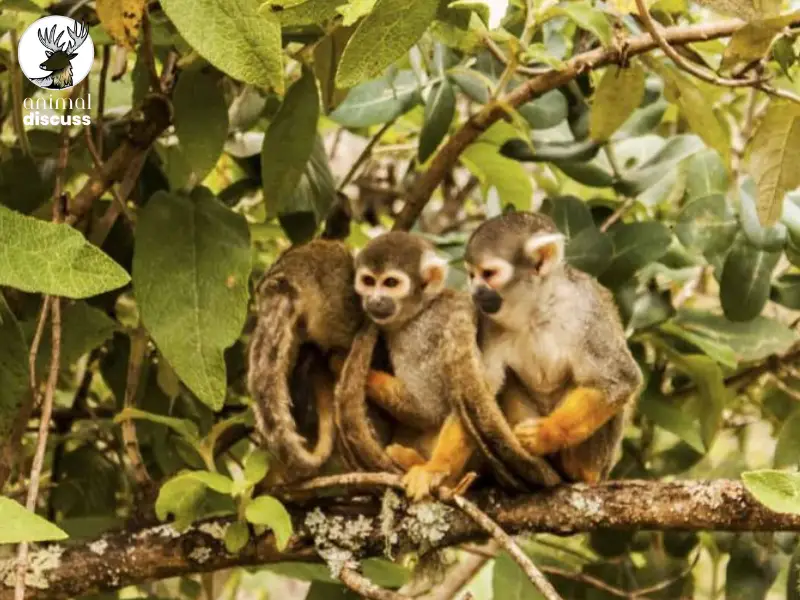
- Promoting sustainable forestry practices and ensuring the continued protection of our existing forests
- Creating pathways that connect different environments so that squirrel monkeys can move around more easily
- Opposing pet trade and illicit hunting
- Managing and mitigating the negative impacts of climate change
- Bringing greater attention to the significance of squirrel monkeys and their function in maintaining balanced ecosystems
FAQs
Now it’s time to encounter some extra questions that might be popping up in your mind regarding squirrel monkey habitat. Those are-
Conclusion
Surprisingly, talking with you about the habitat we’ve come to at the end of our today’s discussion on squirrel monkey’s habitat. Their habitat includes factors like living with social groups, checking water availability, etc. that are quite similar to other monkeys.
But what sets them apart is their versatile ability to adapt to their physiological changes. Their flexibility assures them to hop around from branch to branch for days. Hope you’ve got a clear idea about the habitat of them.
Meta description – Just like us, squirrels live in troops and have a society of themselves. What other things do their habitat include? Know them all here.

